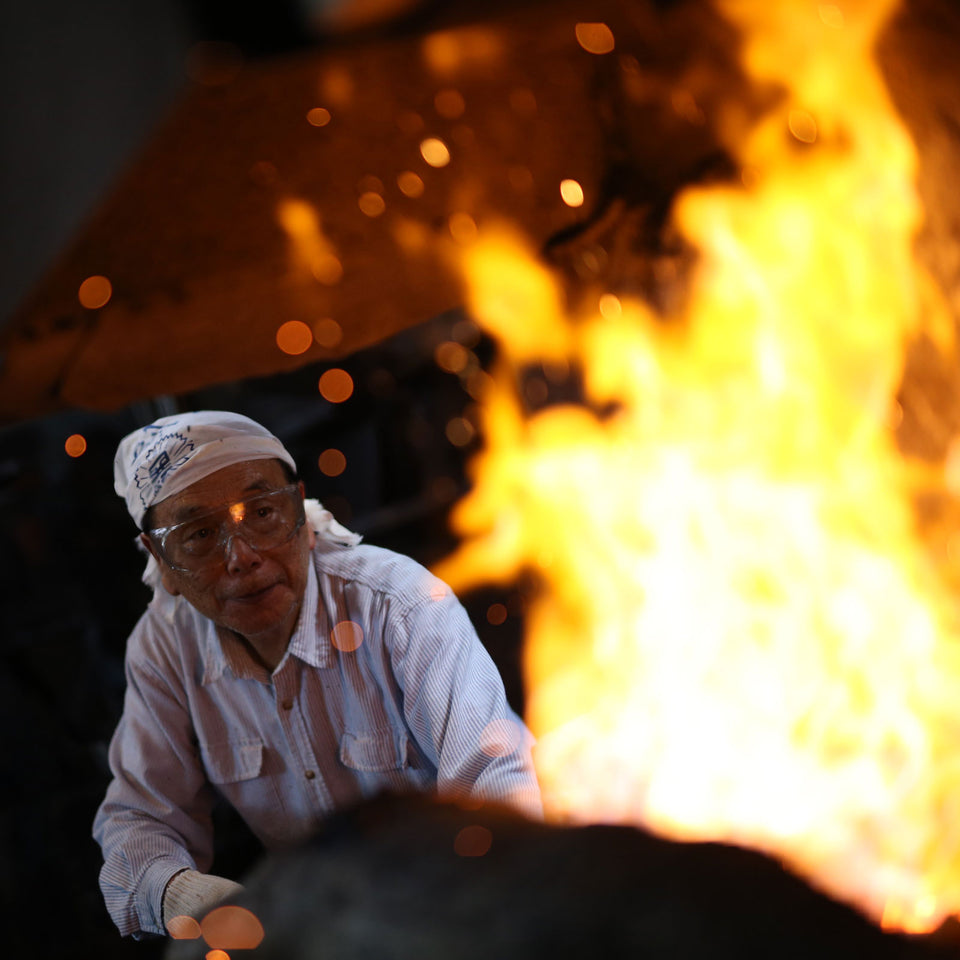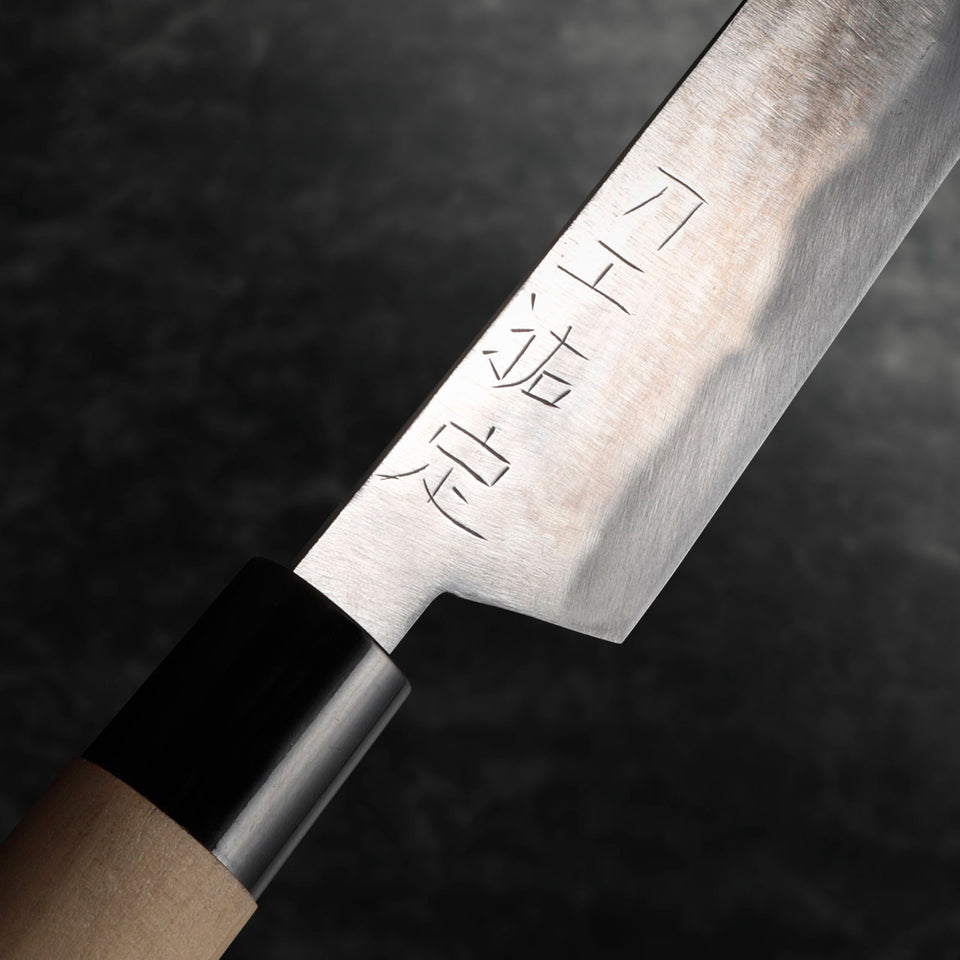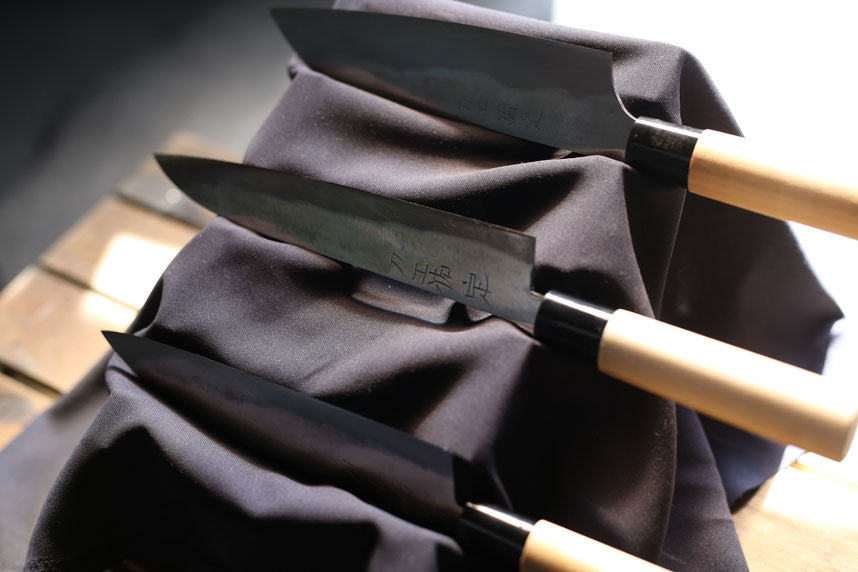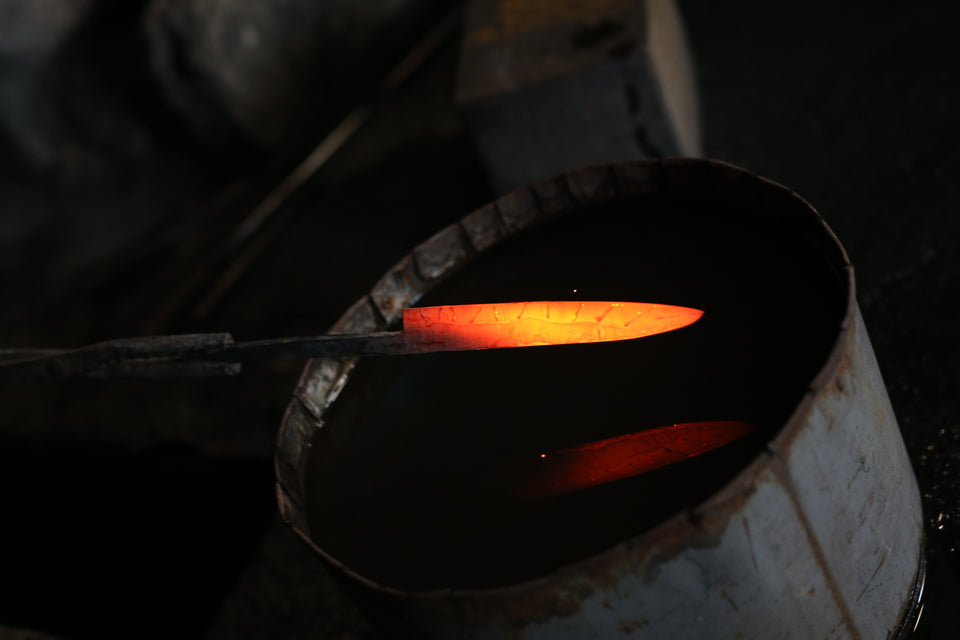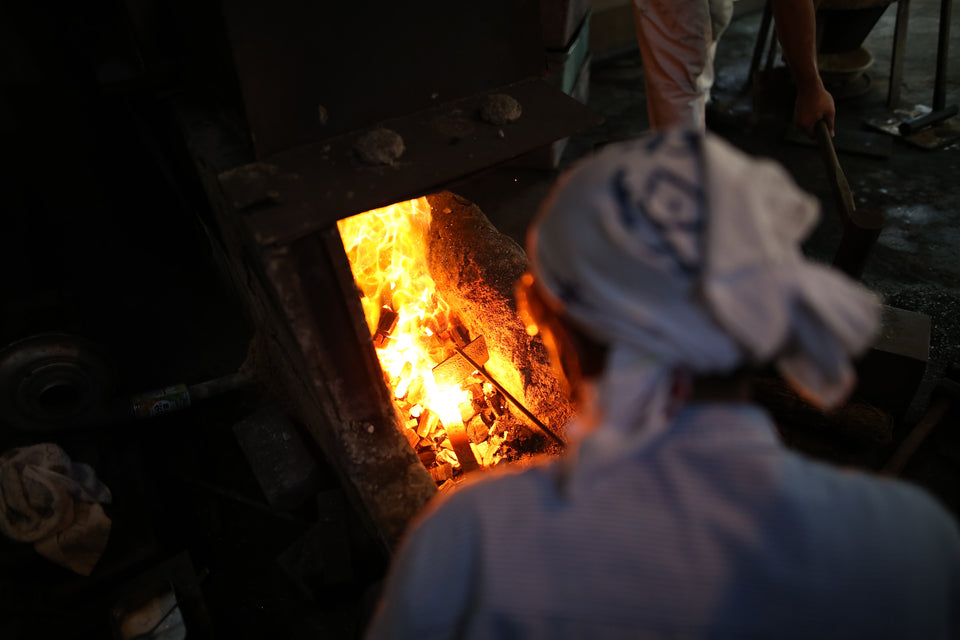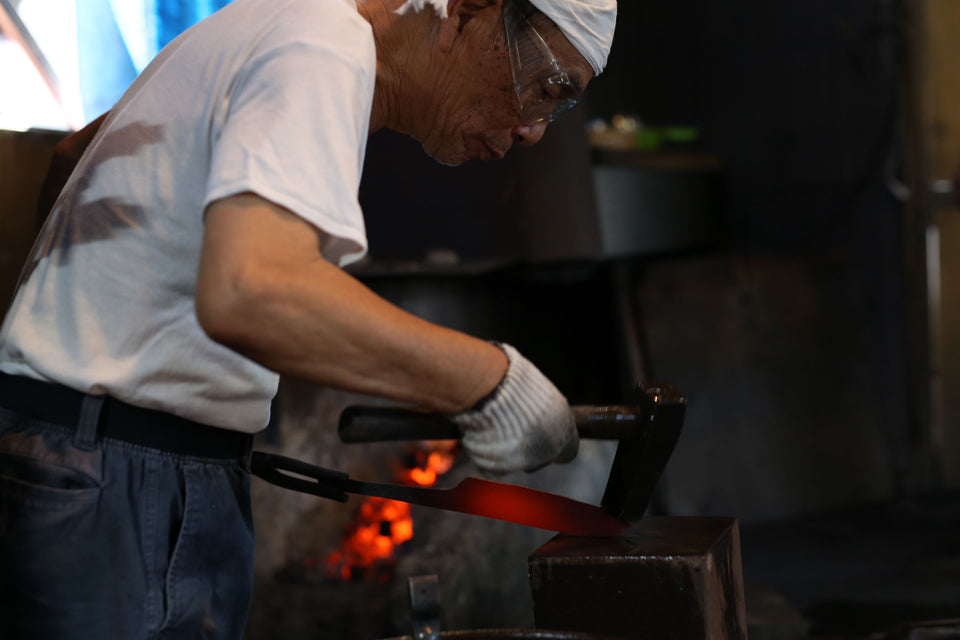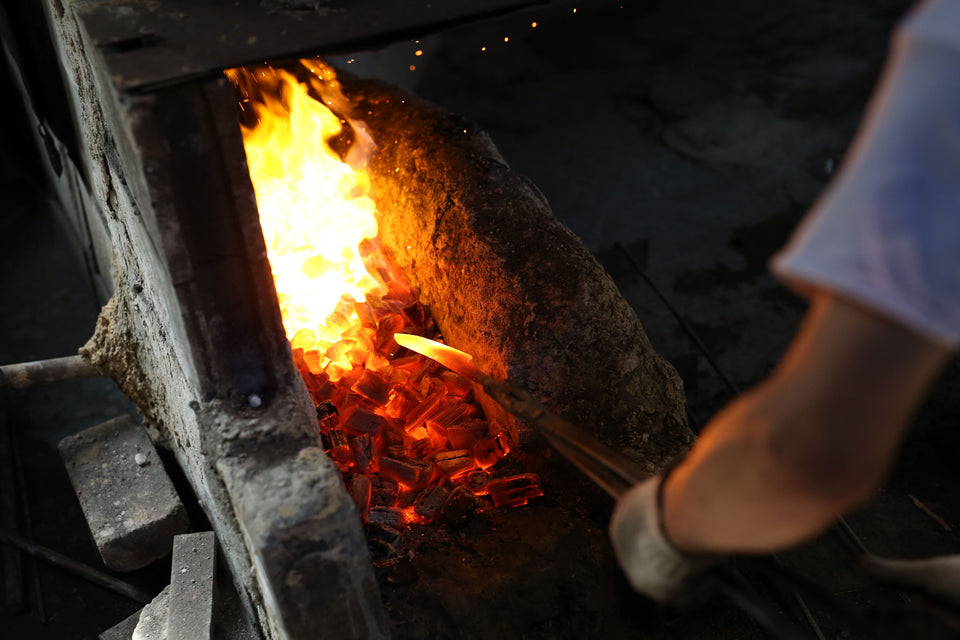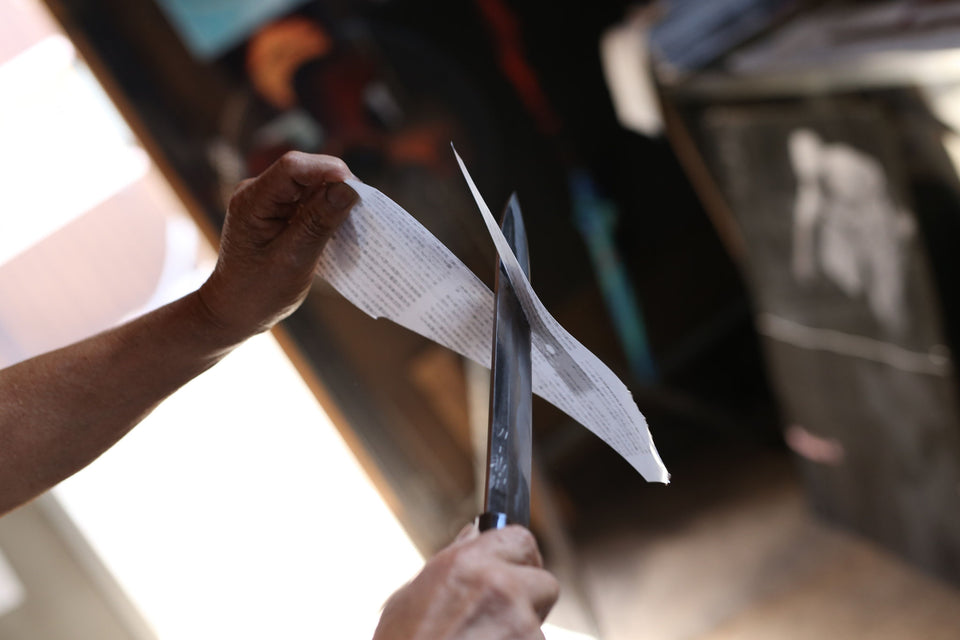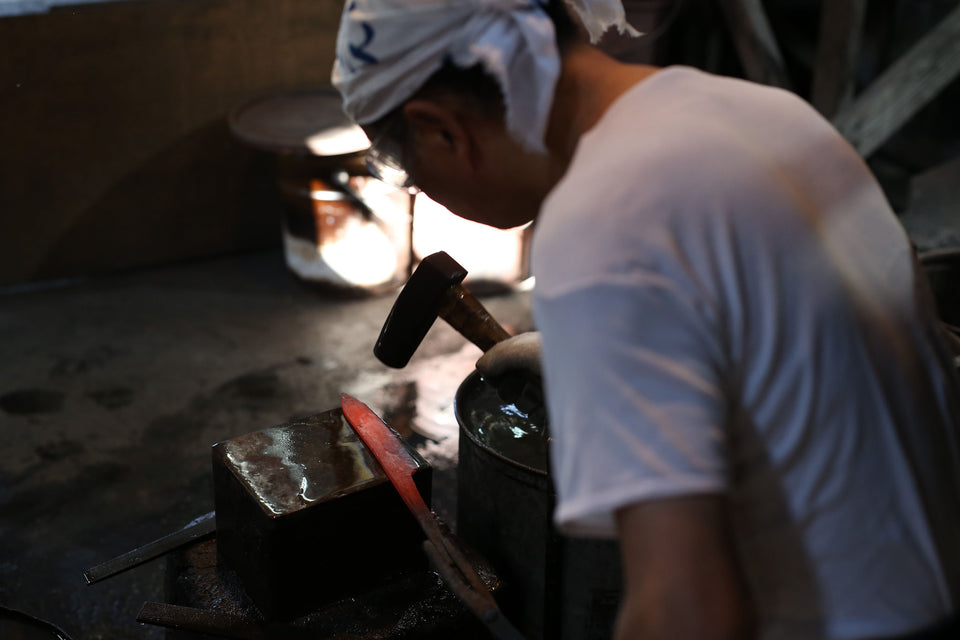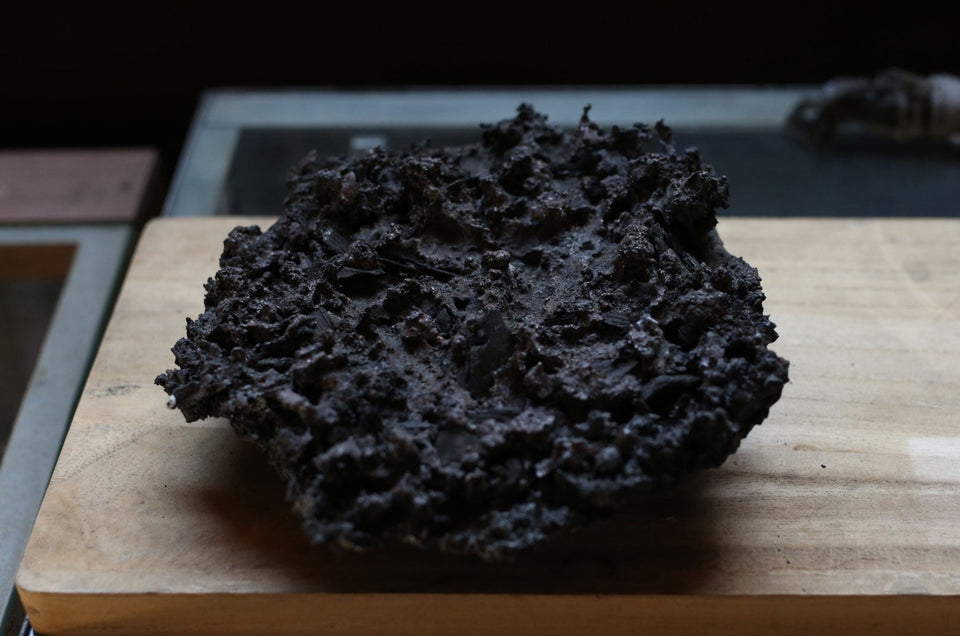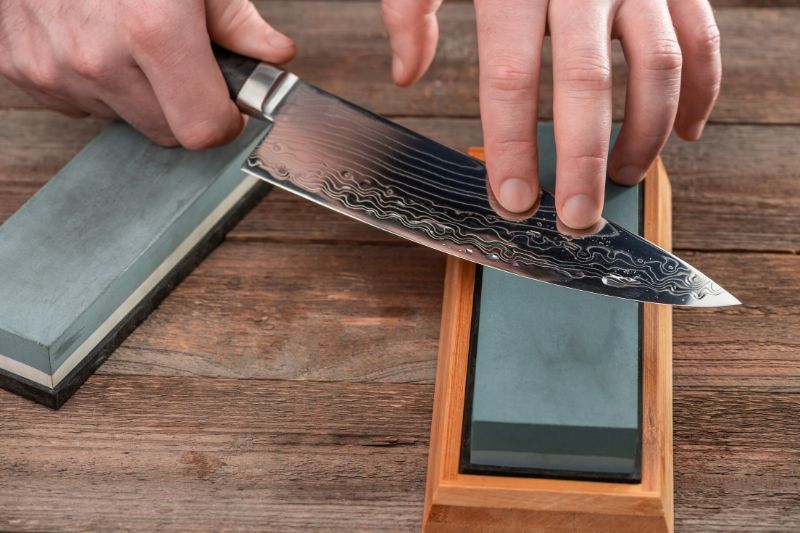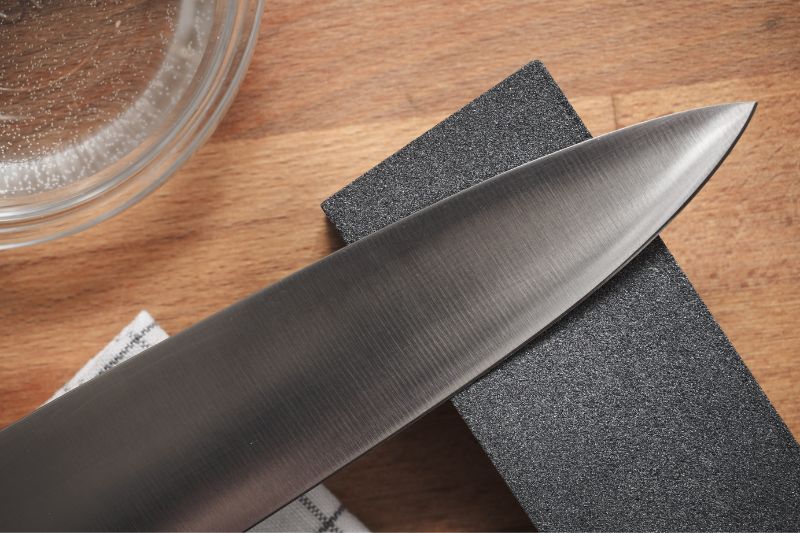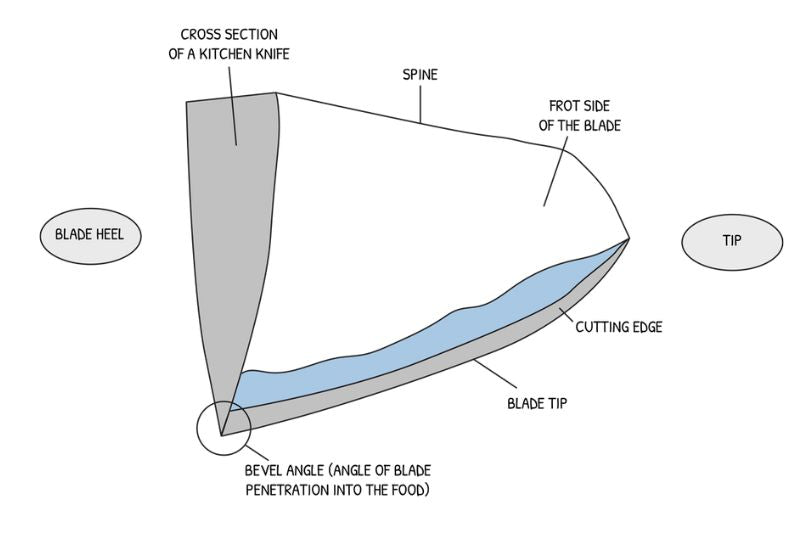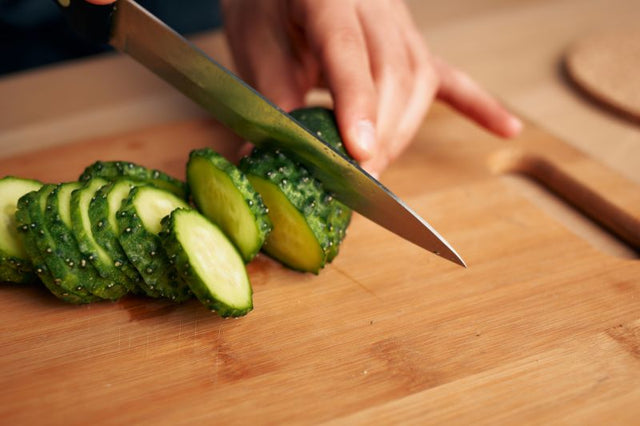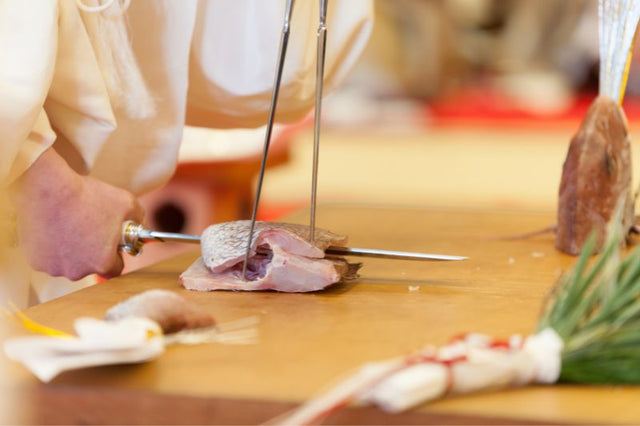Update 7/16/2023
Mr. Ueta started to produce the knives again, but his grip strength as weakened and not able to produce as many knives as he did before the injury.
Below is the original blog post about his injury written in March 2023 --
Hello Everyone,
This blog post will be different from my usual content; however, I hope it will still be educational, nonetheless.
My heart goes out to Mr.Ueta Osafune, who has suffered a severe injury to his thumb on March 2nd, 2023. He will recover, but it may take three to four months before he can do hands-on work. Therefore, I regret to inform those of you wanting one of his bunka knives that there will be an extended waiting period. I understand if you are disappointed, and I apologize. However, I also want to take this as an opportunity to show appreciation for Mr.Ueta and the other artisans that make our knives.
For the longest time, my goal and dream has been to deliver authentic Japanese culture to the rest of the world, whether through traditional knives, green tea, or coffee. Nowhere else have I found such a true representation of this dream than through Mr.Ueta. I feel honored that he would allow me to present his creations to you. He has been practicing his trade for decades, both sword and knife forging. He is a scholar of metallurgy, a master of blade craft, a teacher, and an ambassador of Japanese tradition.
I know that even now, despite his injury, he will be guiding his students but also lamenting that he cannot use both of his hands. For people like Mr.Ueta, creating knives and swords is done for something worth more than profit: personal fulfillment and the satisfaction of continual improvement. Indeed, everyone must make a living, but there are far easier ways to do that than working over a hot forge. I cannot express enough my respect for his dedication to his craft, and I wish him a speedy recovery so that he can once again pursue his passion.
My team and I have been working with Mr.Ueta since the middle of last year in preparation for the launch of this website, targeting April 1st, 2023. (Click here to read why we chose April 1st) We took the photos you can see throughout this post of Mr.Ueta and his apprentices at his workshop. I hope they give you some idea of the hard work that goes into these knives. Looking at them now fills me with inspiration. I hope you get the same feeling of wonderment while I describe below, as best as a layman can, the arduous task these amazing people dare to undertake daily.
Handmade Knives
In today's world, we discard so much. We are used to cheap machine-made goods. Many products are one-use only. People buy knives, and once they are dull, they toss them aside and buy new ones. And it's no surprise that people don't value these products; they are created with no soul and little care.
My Dream of Japan
When I decided to start this business, I wanted to offer only handmade knives, just like my parents used, and their parents and so many other generations of Japanese. It wasn't that long ago that almost everything was handmade. Every tool was used until it was irreparable. In part, people valued these items more because they were more expensive. But more importantly, when a human creates something, it is imbued with an indefinable warmth and spirit, something worthy of preservation.
Objects of Meaning
In Japan, if someone hands you a business card, you are expected to take a moment to appreciate its design and to read its content. And you should never stuff it away into your pocket - and never, ever should you draw or write on it. You might as well be drawing on the face of the person who gave it to you. Why? Because an object is an extension of the person who made it. Likewise, artisan knives are not handed over lightly. They represent weeks of work, years of learning, and timeless artistry. So, we the receivers are responsible for caring for them and appreciating the work that goes into their creation.
How Are Handmade Knives Created?

I want to explain what goes into handmaking a knife. The difficulties that these artisans face. The costs involved both physical and material. When you hold your knife, I want you to be able to imagine the people who made it. I want you to picture Mr.Ueta, sweating over his forge, with one of his students dutifully observing by his side. Not just making a knife, but making it for you.
Tamahagane Steel
Firstly, the steel used in Mr.Ueta's bunka knife is traditional tamahagane - not created in a far-away steel manufacturing plant but at his very own workshop. It is a mixture of iron sand and charcoal - both expensive ingredients. Not all iron sand is created equal, either. The artisans who use it must know where the iron sand has come from to know what to expect from it, as the process can easily go wrong and require more time and resources to refine the steel. Every variable factor is of great importance.

How Much Tamahagane for One Knife?
Ten to fifteen kilograms of tamahagane is required to make a single sword (weighing less than a kilogram). So, you can imagine what is needed for a knife weighing even just 150 - 200 grams. The costly process of making the steel can take up to three days. Needless to say, you will not find tamahagane anywhere outside of Japan. Not only is the iron sand specific to Japan, so is the special process of smelting it.

Forging the Traditional Way
After this, the actual forging of the steel needs to take place. At this stage, if the tamahagane has been created perfectly, there will hopefully be no cracking or splitting of the steel as it is heated and hammered. This process is repeated several times, heating and folding the steel to increase the carbon content and draw out any remaining impurities. Then, the metal is heated and shaped into a bar, and finally, hammered into a knife shape.

Quenching Honyaki
The final touch is adding a layer of clay to the blade's spine to create a soft, supportive upper spine with a hard, sharp edge. This type of steel is called honyaki - one single piece of steel but with two levels of hardness. Once coated in this clay, the blade is given one final heating, during which the artisan must maintain the appropriate temperature, or the blade will crack when it is quenched. Then, the blade will move on to being sharpened, polished, and have a handle attached. The whole process in all takes many days. The result? Simply incredible works of art.
Why Do They Do It?
Mr.Ueta and his disciples work long, hard hours that take a tremendous toll on their bodies. So, why do they do what they do? Why not take a shortcut and buy some steel that's easier to forge? Many artisans do that, and there's no shame in it. But people like Mr.Ueta are looking for subtle purity, controlling the creation of their work from the very start. They strive for perfection, but knowing it is impossible to achieve. They are our link to the past and our heritage - not just for Japanese people but for all people. However, I cannot presume to speak for them; like you, I can only watch and wonder at their incredible drive.
My Final Words
My only concern in working with Mr.Ueta has been whether or not I can do justice to his work. There has never been any doubt about his dedication or expertise. I hope this post has given you some small insight into the world of Japanese knives. And I hope you understand why I have chosen to stock only authentic knives, despite the difficulties in their creation.

My best wishes go out to Mr.Ueta and his apprentices. These artisans generously give us a piece of their spirit through their work. They contribute to keeping Japanese culture alive. Although I'm saddened that I cannot provide Mr.Ueta's creations to you right now, I am also excited about the future. I am excited for you to experience his exceptional artistry. Our other handmade knives are still available, but for now, we must wait patiently for Mr.Ueta to recover fully to give you one of his unique pieces.
Sincerely,
Kei Nishida and The Team at Dream of Japan
Get Free Bonus Books
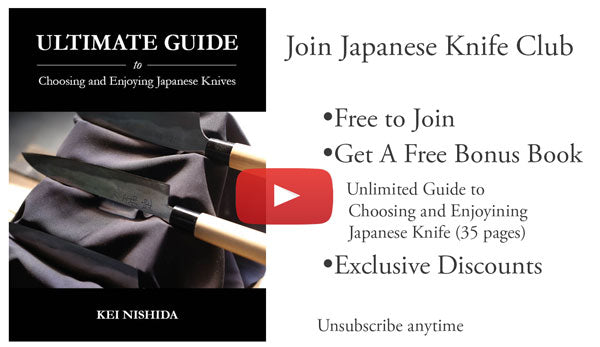
Sign up for free to the Japanese Knife Club to get advice and exclusive articles about how to choose Japanese Knives, and tips and tricks for using Japanese knives.
About the author
Kei Nishida
Author, CEO Dream of Japan
Certification: PMP, BS in Computer Science
Education: Western Washington University
Kei Nishida is a passionate advocate of Japanese craftsmanship, a writer, and the founder and CEO of Japanese Knife Co., Japanese Green Tea Co., and Japanese Coffee Co., all part of Dream of Japan.
His journey began with a mission to introduce the world to the exquisite flavors of Japanese green tea. Through Japanese Green Tea Co., he pioneered the import of premium tea grown in nutrient-rich sugarcane soil, earning multiple Global Tea Champion awards. He then expanded into the world of coffee, launching Japanese Coffee Co., the first company to bring Sumiyaki charcoal-roasted coffee to a global audience.
With a deep appreciation for Japanese artistry and tradition, Kei turned his attention to one of Japan’s most revered crafts: bladesmithing. Through Japanese Knife Co., he made handcrafted katana-style knives, created by a renowned katana maker, available outside Japan for the first time. These exceptional knives embody centuries of samurai sword-making expertise, blending tradition with modern functionality for chefs and collectors alike.
Kei’s journey continues as he uncovers and shares Japan’s hidden treasures—one sip, one blade, and one legacy at a time.


